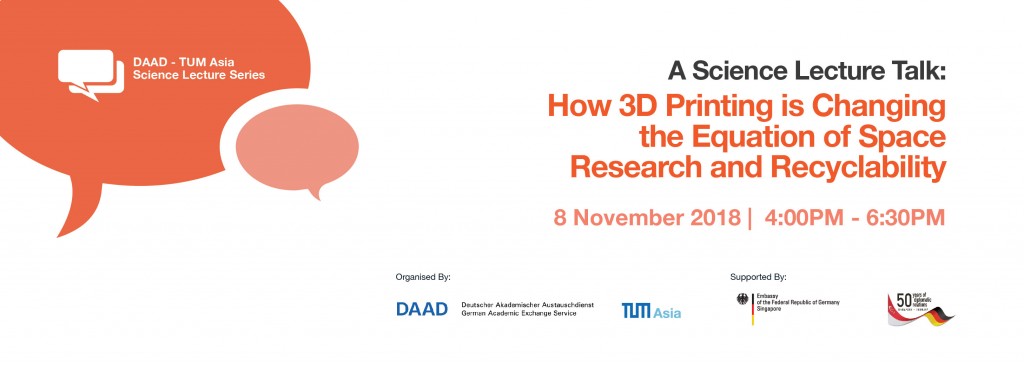CubeSat is a type of miniaturized satellite for space research. It often uses commercial off-the-shelf components for their electronics and structure. 3D printing of such items in orbit would be cheaper and would change the equation of recyclability (thermoplastics), hence making space mission more self-sustaining. These materials should be stable, strong, and resistant to high temperature. Electrical functionality can be added by introducing nano-fillers to these materials. Such miniature satellite can be functionalised once the circuit boards, instruments and solar panels are incorporated.
Experienced academics and researchers will be sharing key emerging trends and developments in aerospace and additive engineering as well as raise awareness of the new opportunities and risks at play in areas of software-defined radio technology and hybrid electronic-mechanical structures.
Details of the Speaker Series’ Session
Date: 8 November 2018, Thursday
Time: 4:00pm – 6:30pm (Refreshments will be served)
Venue: SIT@SP Building, Level 5 (510 Dover Road, Singapore 139660)
Fee: Complimentary


